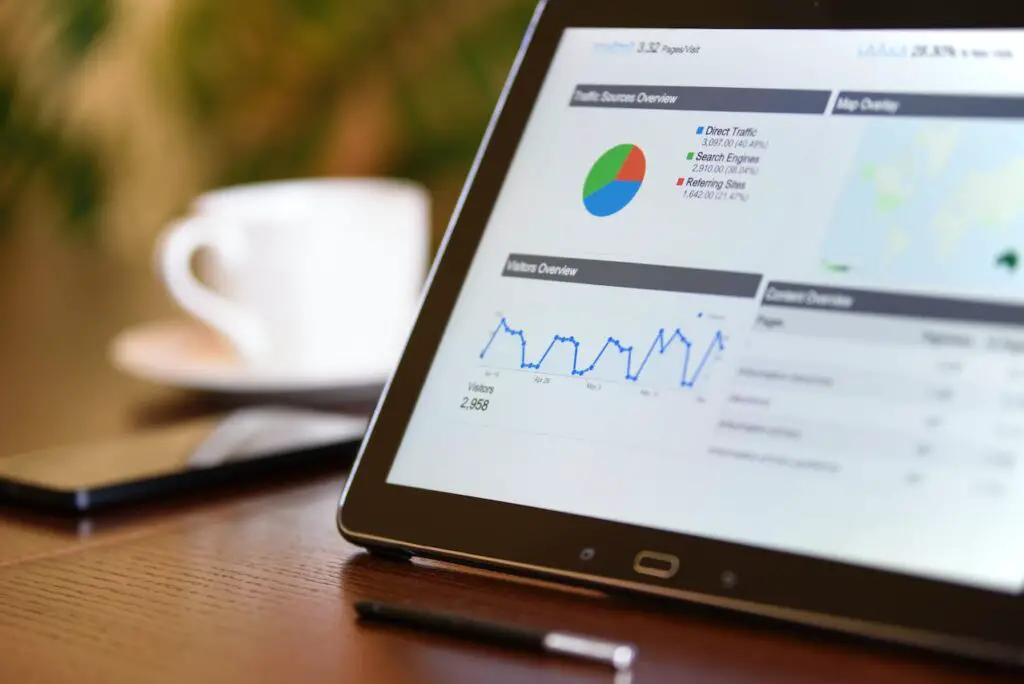Analytics is a crucial tool that every marketer should utilize to improve their marketing strategies. Analytics enables marketers to collect, measure, and analyze data about their target audience, customer behavior, and marketing campaigns. This data provides insights into what is working and what isn’t, enabling marketers to adjust their campaigns and achieve better results.
In this guide, we’ll explore the basics of analytics, how to set up analytics tracking, and how to use the insights gained to improve your marketing.
Understanding Analytics
Analytics is the collection, measurement, and analysis of data about your website, audience, and marketing efforts. The data can come from various sources such as website traffic, social media, email campaigns, and search engines. The goal of analytics is to provide insights that can be used to improve marketing performance.
There are various analytics tools available, including Google Analytics, which is free and widely used. Other popular analytics tools include Adobe Analytics, Piwik, and Clicky.
Analytics can provide valuable information about website traffic, such as the number of visitors, the pages they view, and the time they spend on each page. It can also provide data on audience demographics, including age, gender, location, and interests. This data can help you understand your audience and target them more effectively.
Related: The Importance of SEO in Marketing: Essential Tips for Managers
Setting Up Analytics and Tracking
To begin using analytics, you need to set up tracking on your website. Google Analytics is the most commonly used analytics tool, and it’s easy to set up. To get started, follow these steps:
Step 1: Sign Up for a Google Analytics Account
Go to the Google Analytics website and sign up for an account. Once you’ve signed up, you’ll be prompted to create a new tracking code.
Step 2: Add the Tracking Code to your Website
Once you’ve created the tracking code, copy it and add it to your website’s HTML code. You’ll need to add the code to every page you want to track.
Step 3: Check that Tracking is Working
Once you’ve added the tracking code to your website, you can check that it’s working by visiting the Google Analytics website and navigating to the Real-Time > Overview section. If the tracking code is working correctly, you should see a live report of visitors on your website.
Using Analytics to Improve Marketing
Now that you’ve set up analytics tracking on your website, it’s time to start using the insights gained to improve your marketing efforts. Here are some key ways you can use analytics to improve your marketing:
Track Website Traffic
Analytics can help you track your website traffic, including the number of visitors, the pages they view, and the time they spend on each page. This data can help you understand which pages are most popular and which ones need improvement.
For example, if you notice that visitors are spending less time on a particular page, it may be because the content is not engaging or relevant to their needs. You can use this information to make improvements to the page, such as adding more relevant content, improving the design, or making it more user-friendly.
Related: The Role of Digital Marketing in Business Development: A Guide for Managers
Understand Audience Demographics
Analytics can provide valuable information about your audience demographics, such as age, gender, location, and interests. This information can help you understand your target audience and tailor your marketing efforts to their needs.
For example, if you discover that the majority of your audience is female and aged between 25 and 34, you can tailor your marketing campaigns to target this demographic. This could include using specific language, images, or offers that are more likely to appeal to this group.
Analyze Marketing Campaigns
Analytics can help you analyze the effectiveness of your marketing campaigns. By tracking metrics such as click-through rates, conversion rates, and bounce rates, you can determine which campaigns are working and which ones need improvement.
For example, if you notice that a particular email campaign has a high bounce rate, it may be because the subject line is not engaging or the content is not relevant to the audience. You can use this information to improve future email campaigns, such as by testing different subject lines or creating more targeted content.
Monitor Social Media Engagement
Analytics can also help you monitor social media engagement, including likes, shares, comments, and followers. This information can help you understand which social media channels are most effective for your brand and what type of content resonates with your audience.
For example, if you notice that a particular social media post has a high engagement rate, you can use this information to create similar posts in the future. You can also use this data to determine which social media channels are most effective for your brand and allocate resources accordingly.
Measure ROI
Analytics can also help you measure the return on investment (ROI) of your marketing campaigns. By tracking metrics such as conversion rates and revenue generated, you can determine the effectiveness of your marketing efforts and make informed decisions about future investments.
For example, if you notice that a particular marketing campaign has a high conversion rate and generates significant revenue, you can allocate more resources to similar campaigns in the future. On the other hand, if a campaign has a low ROI, you can make changes or stop investing in it altogether.
Analytics is a powerful tool that can help you improve your marketing efforts by providing valuable insights into your audience, website, and campaigns. By tracking metrics and analyzing data, you can make informed decisions about your marketing strategy, optimize your campaigns, and improve ROI.
To get started with analytics, sign up for a free Google Analytics account and set up tracking on your website. Then, use the insights gained to track website traffic, understand audience demographics, analyze marketing campaigns, monitor social media engagement, and measure ROI. With these tools and techniques, you can improve your marketing performance and drive business success.


Pingback: The Art of Storytelling in Marketing: A Guide for Managers - The Gentlemen Diary